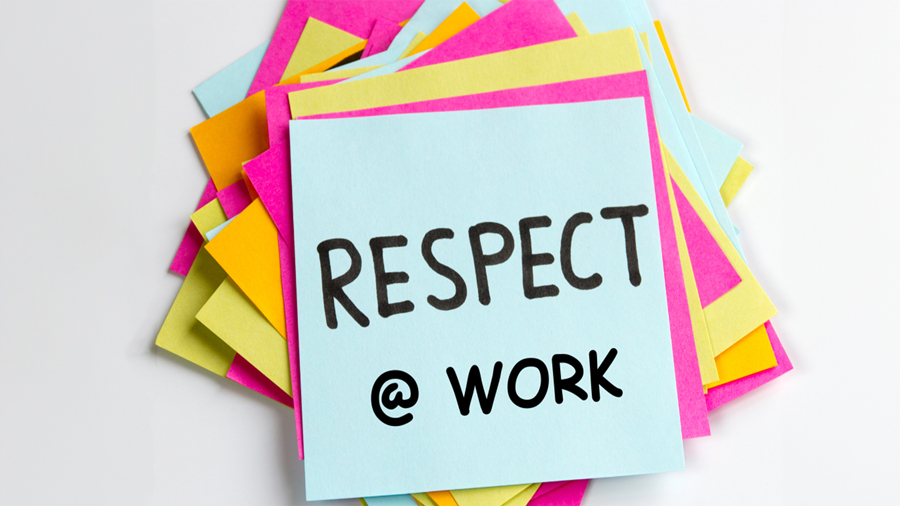Why is it important to implement mental health strategies in the workplace?
Prioritizing and promoting mental health in the workplace can create a positive atmosphere where employees enjoy their work and ultimately boosting engagement and retention. Implementing strategies to promote a psychologically safe workplace has never been more important.
“A psychologically safe workplace is one that does not permit harm to employee mental health in careless, negligent, reckless or intentional ways.” according to Dr. Shain, who contributed to the the development of the book, the Thirteen Psychosocial Risk Factors, simply it is defined as “one in which every practical effort is made to avoid reasonably foreseeable injury to the mental health of employees.”
”Seven Strategies for a Psychologically Safe Workplace”
(As adapted from the Thirteen Psychosocial Risk Factors, the Guarding Minds @ Work Program)
- Management Style
A psychologically safe management style, according to Dr. Martin Shain, is one which is a balanced, expressive/directive style: communicative, supportive, participative, cooperative while being, when needed, decisive and directive.[1]
- Monitoring & Protection
Co-workers and supervisors are supportive of employees’ psychological and mental health concerns and respond appropriately as needed. There are support frameworks in place and, more importantly, employees are aware of the organizational support.
- Communication & Engagement
Workplace psychological safety is demonstrated when workers feel able to put themselves on the line, ask questions, seek feedback, report mistakes and problems, or propose a new idea without fearing negative consequences to themselves, their job or their career.[2]
Employee engagement can be physical, emotional and/or cognitive. Physical engagement is based on the amount of exertion an employee puts into his or her job. Physically engaged employees view work as a source of energy. Emotionally engaged employees have a positive job outlook and are passionate about their work. Cognitively engaged employees devote more attention to their work and are absorbed in their job. Whatever the source, engaged employees feel connected to their work because they can relate to, and are committed to the overall success and mission of their company. [3]
- Organizational Culture
The degree to which a work culture is characterized by trust, honesty, and fairness. In general, psychologically safe organizational culture has been described as “a pattern of basic assumptions invented, discovered, or developed by a given group.” These assumptions are a mix of values, beliefs, meanings and expectations that group members hold in common and that they use as behavioural and problem-solving cues. The critical task is to determine which of these assumptions enhance the psychological safety and health of the workplace.
Workplace culture is arguably the category that has the biggest impact on the promotion of employee mental health. Factors related to workplace culture are: Communication, social support, beliefs, values and norms, management practices, attitudes and perceptions, job satisfaction, job control and decision making, leadership style, work-life balance and human resource systems.[4]
- Workload Management & Work-life Balance
Tasks and responsibilities can be accomplished successfully within the time available. This is the risk factor that many working Canadians describe as being the biggest workplace stressor (i.e., having too much to do and not enough time to do it). Research has demonstrated that it is not just the amount of work that makes a difference but also the extent to which employees have the resources (time, equipment, support) to do the work well.[5]
There is recognition of the need for balance between the demands of work, family, and personal life. This factor reflects the fact that everyone has multiple roles: as employees, parents, partners, etc. This complexity is enriching and allows fulfillment of individual strengths and responsibilities, but conflicting responsibilities can lead to role conflict or overload.[6]
- Job Environment
There is a good match between employees’ interpersonal and emotional competencies, their job skills and the position they hold. This means that employees not only possess the technical skills and knowledge for a particular position, but they also have the psychological skills and emotional intelligence to do the job. Emotional intelligence includes self-awareness, impulse control, zest, persistence, self-motivation, empathy and social deftness. Of note is the fact that a subjective job fit has been found to be more important than an objective job fit, meaning it is more important for employees to feel they fit their job, rather than being assessed and matched to the job. A psychologically safe job environment also allows growth and development. Employees receive encouragement and support in the development of their interpersonal, emotional and job skills.
- Awards, Recognition & Team Building
There is appropriate acknowledgement and appreciation of employees’ efforts in a fair and timely manner. This includes appropriate and regular financial compensation as well as employee or team celebrations, recognition of years served, and/or milestones reached.
By providing resources and support employers can contribute to a healthier and happier work force.
The National Standard of Canada for Psychological Health and Safety in the workplace is a voluntary set of guidelines, tools and resources designed to promote workplace employees’ psychological health and to prevent psychological harm due to workplace factors. The Standard was prepared by the Canadian Standards Association and the Bureau de normalization du Quebec and was commissioned by the Mental Health Commission of Canada and approved by the Standards Council of Canada.
The National Standard for Psychological Health and Safety in the Workplace Guide
Workplace Strategies for Mental Health website – where you’ll find tools and resources for workplace mental health and psychological safety.
HR Proactive Inc. has been building respectful workplaces since 1997.
[1]The Psychologically Safe Workplace: New legal requirements and how to address them. Presentation by Martin Shain, S.J.D. Minister’s Action on Wellness Forum, 2 Dec. 2010
[2]Guarding minds @ work: Psychological Risk Factors. Web. 20 Oct 2011.
[3]Guarding minds @ work: Psychological Risk Factors. Web. 20 Oct 2011.
[4]Minding the Workplace. Alberta Health Services. Web. 9 Nov. 11.
[5]Guarding minds @ work: Psychological Risk Factors. Web. 20 Oct 11.
[6]Guarding minds @ work: Psychological Risk Factors. Web. 20 Oct 11.











